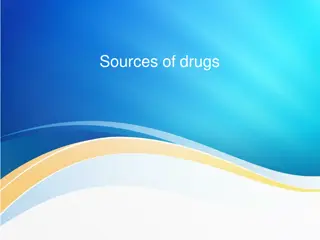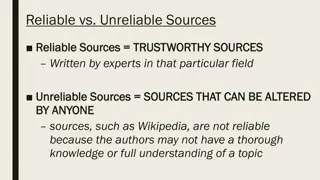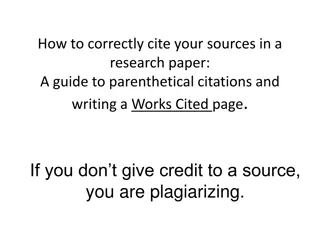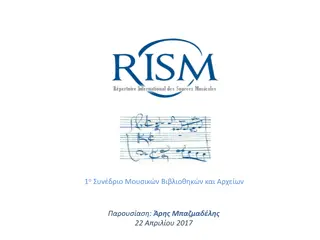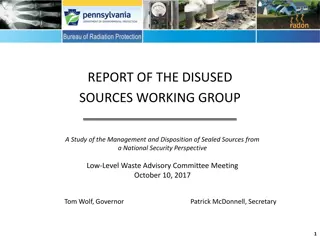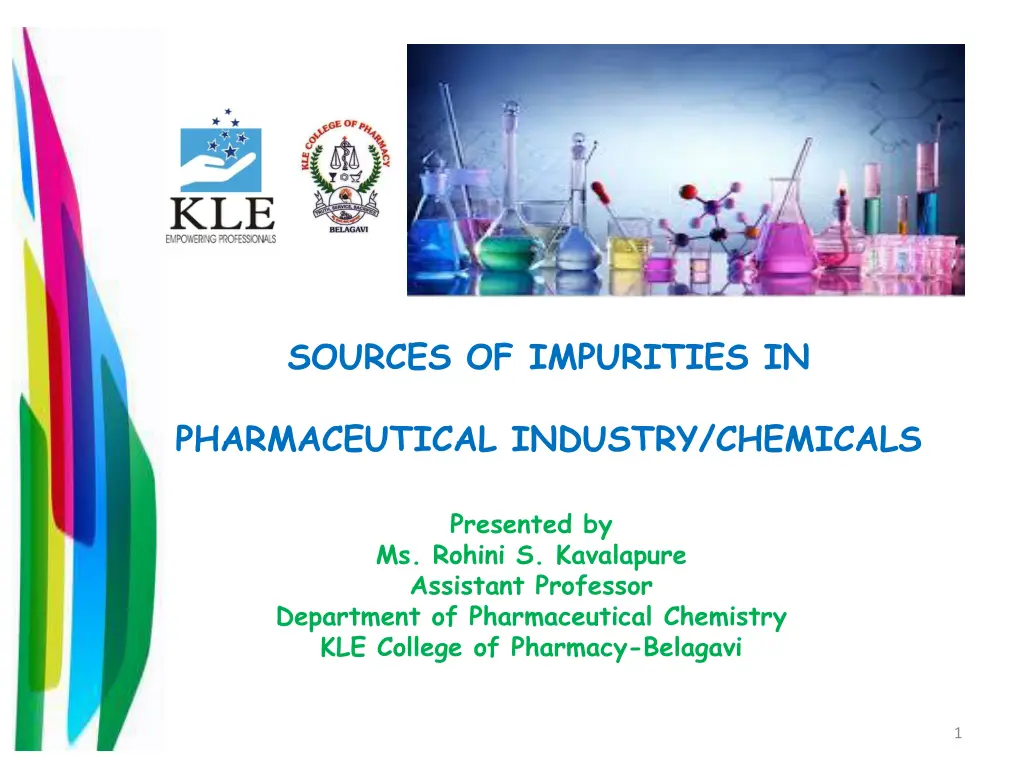
Impurities in Pharmaceutical Industry
Explore the various sources of impurities in the pharmaceutical industry, including raw materials, reagents, intermediates, defects in the manufacturing process, solvents, atmospheric contamination, and more. Learn how impurities can affect the final product quality. Presented by Ms. Rohini S. Kavalapure, Assistant Professor at KLE College of Pharmacy, Belagavi.
Download Presentation

Please find below an Image/Link to download the presentation.
The content on the website is provided AS IS for your information and personal use only. It may not be sold, licensed, or shared on other websites without obtaining consent from the author. If you encounter any issues during the download, it is possible that the publisher has removed the file from their server.
You are allowed to download the files provided on this website for personal or commercial use, subject to the condition that they are used lawfully. All files are the property of their respective owners.
The content on the website is provided AS IS for your information and personal use only. It may not be sold, licensed, or shared on other websites without obtaining consent from the author.
E N D
Presentation Transcript
SOURCES OF IMPURITIES IN PHARMACEUTICAL INDUSTRY/CHEMICALS Presented by Ms. Rohini S. Kavalapure Assistant Professor Department of Pharmaceutical Chemistry KLE College of Pharmacy-Belagavi 1
SOURCES OF IMPURIES: 1. Raw Materials 2. Reagents Used in the Manufacturing Process 3. Intermediates Formed during Manufacturing 4. Defects in the manufacturing process 5. Solvents 6. Action of solvents and reagents on Reaction vessels 7. Atmospheric Contamination 8. Defective storage of Final Products 9. Adulteration
1. Raw Materials Pharmaceutical substances are either isolated from natural sources or synthesized from chemical starting materials which have impurities. Impurities associated with the raw materials may be carried through the manufacturing process to contaminate the final product.
2. Reagents Used in the Manufacturing Process Regents used to eliminate other impurities: Barium is used to remove sulphate from potassium bromide, which can be found itself as impurity at the end of process.
3. Intermediates Formed during Manufacturing Sometimes, an intermediate substance produced during the manufacturing process may contaminate the final product. e.g. Sodium bromide is prepared by reaction of sodium hydroxide and bromine in slight excess.
4.Defects in the Manufacturing process Improper mixing, Incompleteness of reaction. Non adherence to the proper temperature.
5. Solvents Tap water. Softened water. Demineralized water. Distilled water.
6.Action of solvents and reagents on Reaction vessels Action of solvents. Metallic reaction. Iron vessels.
7. Atmospheric Contamination Atmosphere may contain dust (aluminium oxide, sulphur, silica, soot etc.) and some gases like carbon dioxide, sulphur dioxide, arsine and hydrogen sulphide.
8.Defective storage of Final Products Chemical decomposition. Ferrous sulphate. Iodine. Potassium Iodide
9.Adulteration Adulteration with cheaper and exhausted substances KBr. Potassium Salts. Oils and Fats.











